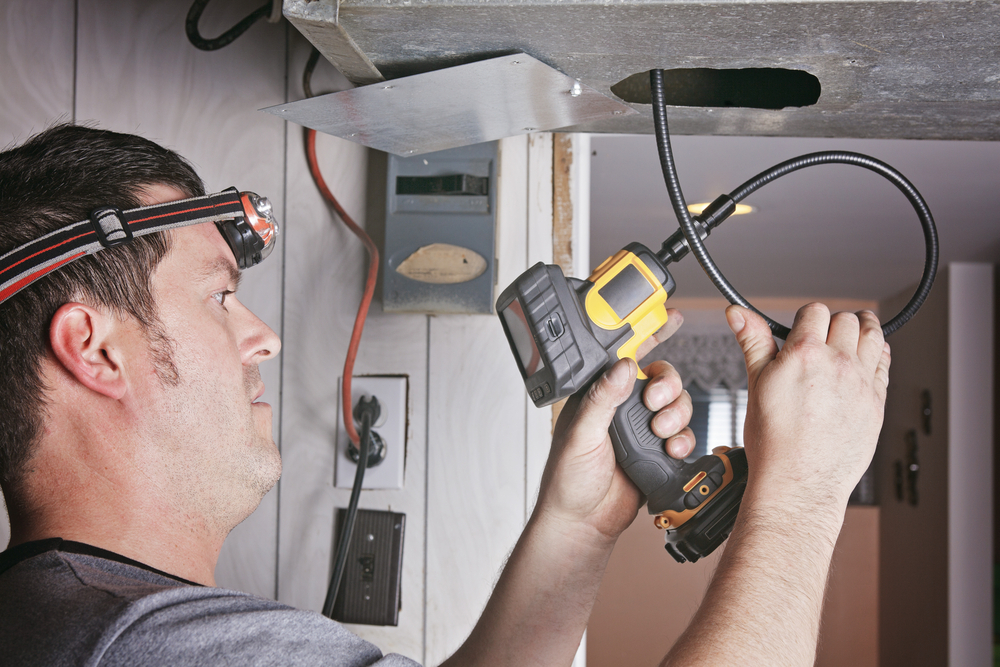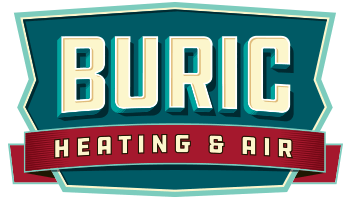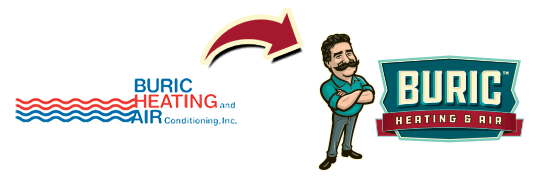
Indoor air quality is nothing to sneeze at. If you’re an allergy sufferer, you’re surely familiar with the achy days and sleepless nights that often come about during the height of pollen season. If you have other upper respiratory issues, you may find yourself especially sensitive to the overall air quality inside your home. Even if you don’t have these issues, you may still experience the frustration of a home where the air feels stuffy or stale.
Allergy pills can alleviate some of the symptoms. Treating your watery eyes and runny nose will only address the symptoms of the problem and not the root cause. Besides, when you consider the side effects of common allergy meds, you may wonder if you’re better off sneezing your way through the day.
What if you could diagnose your home’s air quality and map out a treatment plan? While it takes a trained technician to properly assess your home’s indoor air quality, we can identify the 10 most common contaminants lurking in the ductwork of your home—along with helpful ways to treat them.
Common Contaminants that Reduce Your Indoor Air Quality
Every home is different. But your indoor air quality may be impacted by one or more of the following contaminants:
1. Pet Dander
Your furry friends are part of your family. But they could also be making you sick. Pet dander includes microscopic flakes of skin, which can trigger allergies. Because allergic reactions aren’t always triggered below a certain threshold, you may discover that your allergies don’t bother you until pet dander builds up.
Pet dander can quickly build up inside your home’s ductwork, especially if you haven’t cleaned your ducts in a while. When this happens, it can turn allergy sufferers into an itchy, sneezy mess.
2. Pollen
Pollen is particularly abundant during the spring and summer months. Your home’s AC unit has an air filter that is designed to trap larger pollen particles, but the smaller pieces can easily coat the interior of your home’s ductwork.
If you don’t change your air filter regularly, this build-up can continue for years, turning your dream home into an allergy sufferer’s worst nightmare.
3. Mold and Mildew
Moisture—including humidity—can accelerate the growth of mold and mildew. Have you ever noticed that the air coming from certain vents smells old or musty? That’s a sure sign of the growth of molds and mildew.
While these organisms are generally harmless, they shouldn’t be ignored. Not only will that musty smell gradually worsen, but the moisture that spawns them can be damaging to the valuable electronics and moisture-sensitive items in your home.
4. Bacteria and Viruses
Dirty vents can also be a breeding ground for bacteria and viruses. These can cause sickness and spread throughout your home quite easily. This means that if one of your family members gets sick, the illness can quickly spread to others through the ventilation system.
5. Dust and Dust Mites
Your home’s indoor air quality might be the simple result of ordinary household dust. That may be fine -- until you consider the fact that dust consists of fragments of dead skin and hair, which provide a buffet dinner for microscopic dust mites.
6. Tobacco Smoke and Unpleasant Smells
While unpleasant smells don’t necessarily pose a health hazard, they can certainly reduce the enjoyment you have in your home. Tobacco smoke and other unpleasant odors can easily get trapped in your home’s air vents -- they can even be left behind from a previous owner.
7. Pests
Do you hear the pitter-patter of little feet? Dirty or moist air ducts can be a paradise for bugs and larger pests like mice and even rats. Not only do these pests make you cringe, but they can also be carriers of other diseases that would be best to avoid.
If these pests die in your vents, they can leave behind decaying organic matter that can adversely affect your home’s indoor air quality.
8. Asbestos and Construction Dust
While this may be more common in older homes, any home can have structural residue in the ventilation system. Asbestos is typically found only in older homes, but it presents a very direct health hazard to you and your family.
9. Fiberglass
Fiberglass fibers from your home’s insulation can pose a fairly significant respiratory hazard. These fibers can also clog your AC unit’s air filter, posing the risk of mechanical damage to your home’s HVAC system.
10. Water
As we’ve already seen, excess moisture can be a breeding ground for other contaminants such as mold, mildew, and bacteria. But water can also pose a hazard all by itself. Excess moisture and humidity can cause damage to the building materials in your home, as well as cause rust to metal components in your ventilation system and beyond.
How to Improve Your Home’s Indoor Air Quality
Regardless of the source of your indoor contaminants, your home’s indoor air quality can easily be treated and maintained.
Air Duct Cleaning
First, you can eliminate most of these contaminants by scheduling an air duct cleaning. During this procedure, an HVAC technician will use specialized equipment to clean your air ducts, sweeping away dirt and debris that can cause irritation and allergies.
Ideally, you should consider having this done on a yearly basis. Allergy sufferers may especially benefit from a yearly cleaning, which can keep your home feeling clean and comfortable regardless of the pollen count outside!
AC Filter Replacement
Your AC unit already contains an air filter. But a standard filter is usually only 1-inch thick. These filters can’t trap the smaller particles associated with allergies and illness.
An HVAC technician can perform an AC filter replacement, providing your home with a filter that’s compatible with your existing HVAC system, but more able to efficiently remove the nastier dirt, debris, and contaminants from your home.
An AC filter replacement is one of the quickest and best ways to improve your home’s indoor air quality and maintain it until its next replacement.
As an added benefit, replacing your air filter can optimize the efficiency of your AC unit. This can translate into lower summer utility bills, as well as minimizing the need for costly, future maintenance.
UV Air Sanitizers
UV air sanitizers have been in use in hospitals and medical facilities for quite some time. Their greatest benefit is their simplicity. Ultraviolet (UV) lights have been shown to destroy mold, bacteria, and most viruses on contact. UV air sanitizers are therefore one of the best ways to ensure pure, clean air.
Typically, these devices are installed in one of two places. Some can be aimed at your AC unit’s condenser coils, resulting in cool air that is free from bacteria or viruses. Other UV air sanitizers are installed in your home’s ductwork near the vent. While tucked away from sight, these lights purify the air as it enters your living space.
Affordable HVAC Near Me
At Buric Heating & Air Conditioning, we understand the importance of your home’s indoor air quality. That’s why our service team is armed with the latest tools to eliminate airborne contaminants and ensure a healthy, comfortable home for you and your family.
We can replace your AC filter or work with you to provide affordable, reliable UV air sanitizers for any room in your home.
Buric Heating & Air Conditioning is a family-owned business, and our friendly team will treat you like family, as well. When you’re ready to ditch the allergy pills and find a lasting solution, give us a call.




